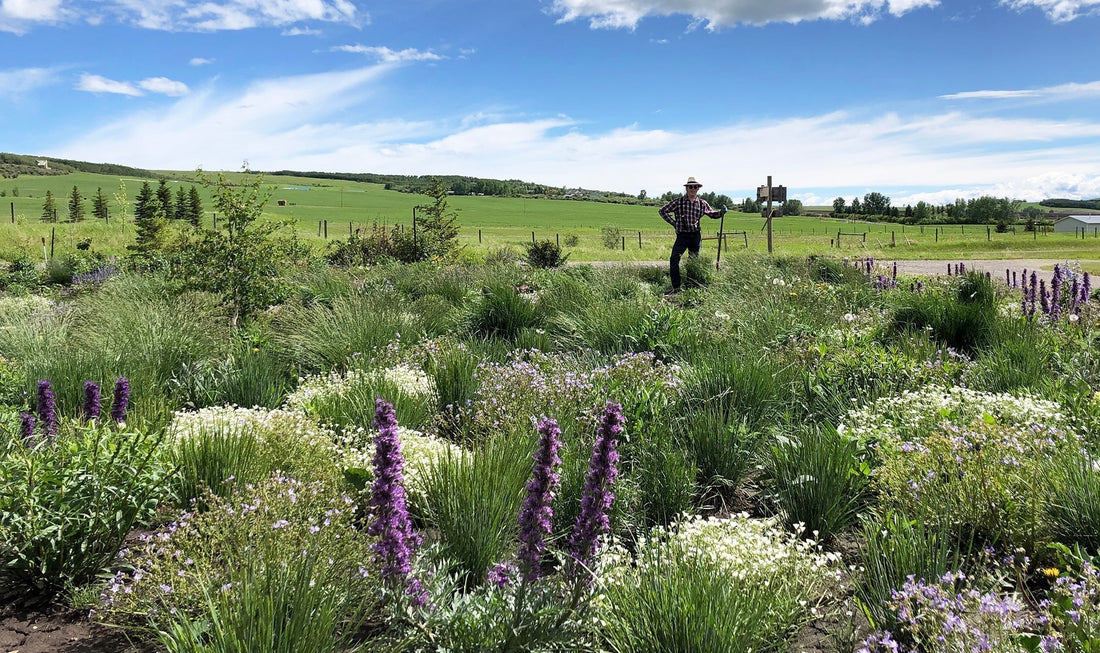
🌿 Establishing Native Wildflowers
Share
Practical advice for gardens, acreage projects, and large-scale restoration
Whether you’re planting a few native wildflowers in your yard or restoring a disturbed space after construction, the fastest and most effective way to establish native perennial wildflowers is by planting plugs or potted stock.
Perennials are very different from annuals—they're more complex to germinate, often requiring specific conditions and sometimes taking years to do so. Click here to learn more.
Can’t Afford Plugs for a Large Space?
If you’re working with a larger site, don’t worry—you don’t need to cover the whole area with wildflowers all at once. A wildflower garden is different from a naturalized landscape. Gardens are hand-tended, weeded with care, and nurtured closely. It’s possible to grow a wildflower garden from seed, but it takes patience, attention, and some knowledge of seed dormancy and long germination timelines.
Most perennial seeds stay viable for many years. If they don’t germinate in year one, they haven’t failed—they’re just waiting for the right conditions.
In Larger Areas: Let Grass Be Your Ally
When you're naturalizing a larger area, grasses are your best friend. Grasses germinate quickly and begin offering competition for weedy invaders almost immediately. Cool-season native grasses do best when seeded in spring or late summer/fall, when temperatures are cooler and soil moisture levels are higher, this way you can get assistance from Mother Nature with some of the aftercare.
Within the grass-seeded area, we recommend planting Wildflower Islands—smaller, well-marked patches where wildflowers are seeded or planted. These islands receive extra care (watering and weeding by hand) and are protected from mowing.
Wildflower Islands: How and Why
These islands can include plugs, seed, or both, and their size and content can vary depending on your budget and goals. The best approach is to plant plugs and sow seed, which can take two years off the establishment timeline.
Our wildflower plugs are generally old enough to flower in their first growing season, depending on the species, when planted in spring or fall. Once established, they begin producing seed every year that spreads naturally over time. Consider prevailing winds and slope when choosing the location of your islands.
🌱 Aggressive wildflowers (those that spread readily by seed or rhizomes) are ideal for large spaces. In small gardens, opt for less aggressive species to maintain balance.
If You’re Seeding Only
Even if you’re working exclusively with seed, we still recommend the island approach. It makes it easier to monitor progress, reduces weeding overwhelm, and supports early establishment.
Our High Diversity mixes contain up to 30 wildflower species—some of which are unique to this format. The Wildlife Mixes offer 15 species each across three distinct blends with no overlap, for a total of 45 different wildflowers.
Many of these species require winter stratification, so fall sowing is ideal. Germination occurs mostly in the first two years, though some seeds will continue sprouting for four or more years.
Easy Grow mixes include species that don’t require stratification, but they still benefit from attention and consistent moisture. Even without dormancy requirements, germination tends to be staggered over two or more years.
Pairing plugs with a seed mix—especially if the plugs match species in the mix—makes it much easier to recognize emerging seedlings. That early recognition goes a long way in helping distinguish wildflowers from weeds.
Realistic Expectations = Long-Term Success
Naturalizing a space from scratch is a long-term investment, and the work is different than mowing or spraying weeds every few weeks. You’ll be spending time in your space, observing how wildflowers and grasses emerge, how wildlife begins to return, and how the land transforms over time.
This is sunshine, fresh air, movement, and connection—not a battle to be won with chemicals and lawnmowers. The truth is, Mother Nature always wins. All we can do is guide the process and make space for something beautiful.
